
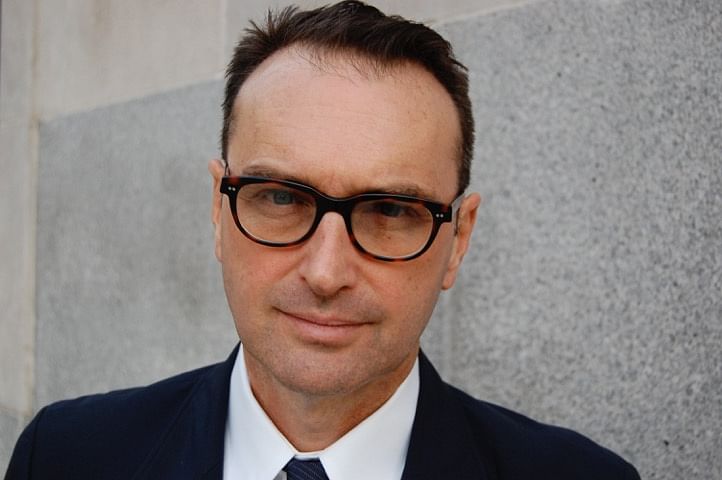
The Deans List is an interview series with the leaders of architecture schools, worldwide. The series profiles the school’s programming, as defined by the head honcho – giving an invaluable perspective into the institution’s unique curriculum, faculty and academic environment.
For this issue, we spoke with Michael Speaks, the Dean at Syracuse Architecture.
Perhaps better known for its industrial history than its architectural influence, Syracuse, New York is also the relatively quiet home to one of the first, and consistently top-rated, architecture schools in the United States. Founded in 1873, the University of Syracuse’s School of Architecture played front-row witness to some of the country’s largest manufacturing and infrastructural dramas of the 20th century, in the midst of the Erie Canal and America’s “Steel Belt”, followed by its eventual collapse into the “Rust Belt”. Throughout, Syracuse Architecture (as it’s called) has stayed grounded in its focus on educating well-rounded, informed architects, concerned with substance over style.

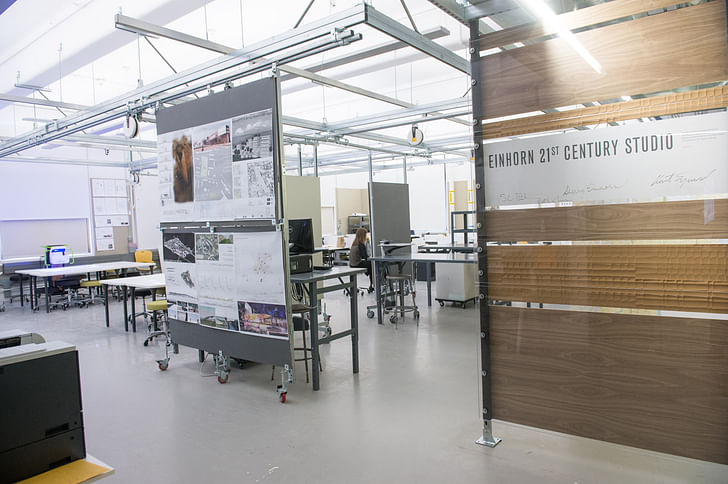
Michael Speaks became dean of Syracuse Architecture in 2013, after a deanship at the University of Kentucky’s College of Design in Lexington. At both institutions, he has pushed to have student architects collaborate locally and globally on real, economically-aware projects, including a successful effort to help revitalize Kentucky's houseboat industry. Whatever Syracuse doesn’t have at home, in metropolitan cachet or architectural draw, Speaks has helped build bridges to – including strengthening the school’s alt-center presence in New York City (at the Fisher Center) along with abroad programs in Florence and London, among many others. He’s also seeking to redefine the architecture thesis project into a collaborative research process, with faculty advising a hierarchy of students.
Speaks has also stirred the pot of the Visiting Critic Studios, pushing them in more progressive directions, to add a contrasting flair to the standby curriculum. But perhaps what’s most notable about Speaks’ deanship is its hinting defiance of architectural elitism – in whatever form it may take. Speaks’ Deans List casts a subtle tinge of irreverence, displaying a leader always fidgety with the status quo, therefore prioritizing students that are not only capable and engaged, but critical and independent.
Speaks penned a kind of “Deans List Report” in response to our standard questions for this feature. Read below:
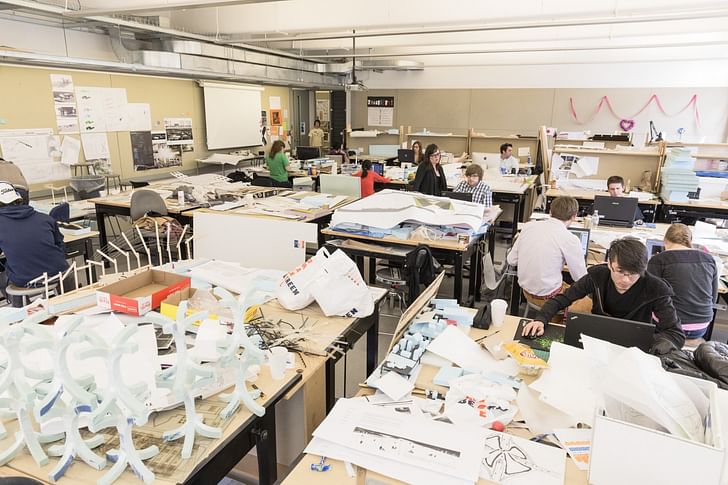
On his role at Syracuse:
I've been at Syracuse now for almost two years and during that time there has occurred a great deal of change, both within the School of Architecture and at the University level. Last year, Syracuse hired a new chancellor, Kent Syverud. Very soon after his arrival, Chancellor Syverud began to set a new course focused on elevating the overall academic standing of the university and on enhancing the quality of student life on the Syracuse campus. This year the entire university is engaged in an ambitious “Fast Forward” campaign that will result, at the end of the school year, in a new academic strategic plan and a new campus master plan with which we, at the school, have been very involved. Steve Einhorn, a Syracuse Architecture alum, and Board of Trustees member, is leading the campus master planning effort for the All students considering the study of architecture today are keenly interested in actively engaging real world problems. university. Associate Dean Julia Czerniak and I were on the committee that selected Sasaki, and we are also part of smaller group that has been charretting and working very closely with Sasaki as they develop their planning framework. In addition, this semester we tasked two of our Visiting Critics – Scott Bishop from Stoss Landscape Urbanism in Boston and Gina Wirth from Scape Landscape Architects in New York City – with leading studios focused on the campus and on issues targeted by the master plan. It is especially gratifying to have faculty and students involved in such an impactful project that will shape the future development of the campus.
These efforts to redesign the academic and the physical identity of the university have given all schools and colleges at Syracuse an opportunity to think about where they have been, where they are, and where they are going. Syracuse Architecture is certainly among the strongest academic units at Syracuse University—the school is consistently ranked among the top professional schools in the nation. Nonetheless, we must take a strategic approach to our future direction and to the many challenges and opportunities today facing not only our school, but also all schools of architecture. Syracuse Architecture is a very successful professional degree program built largely on the curriculum developed by former Dean Werner Seligmann. That curriculum, and the outstanding faculty that taught and continue to teach it, have served the school extremely well for many years. But the world of practice and the world at large are changing and we, as a school, must adapt and evolve to stay ahead of those changes.
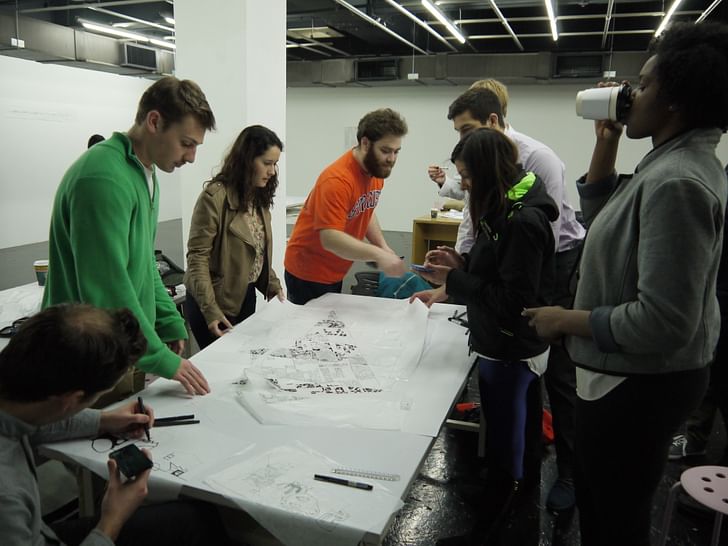
On the relationship between academia and practice:
Today the relationship between the profession and architecture schools is more interdependent than at any time in history. And yet, many of our best schools of architecture fail to prepare students to practice in an increasingly competitive global marketplace. Every school is different, of course, but the differences among schools are becoming more pronounced. Many of the best schools – mostly Ivy and pretend Ivys – take an art historical approach and focus on teaching students disciplinary knowledge which is acquired through an active engagement with a real or imaginary architecture canon. That is a wonderful education if you want to be a university professor of architecture, but if you want to work in a large architecture or development firm, or you want to start your own office it may not be the best course of study.
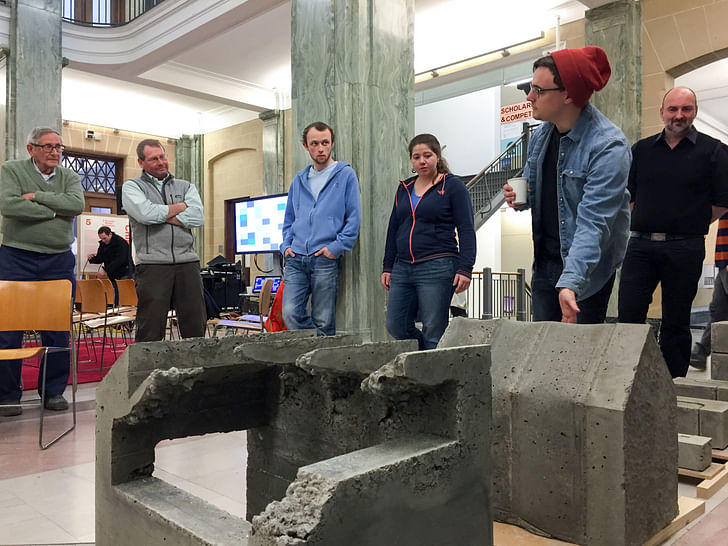
On providing for employment:
Syracuse Architecture, by contrast, is a professional school focused on providing a design education that meets the demands of the contemporary world. All students considering the study of architecture today are keenly interested in actively engaging real world problems. We have quite a number of Syracuse Architecture students who have become interested in real estate development; many, in fact, take a real estate minor in the business school. These students want to engage, they want to make a difference and they are decidedly practical. They know, for example, that even if they do not aspire to be developers (though some do) they need to be conversant in the language of real estate, finance and development because, as a practical matter, it will empower them to act. Many in the architecture academy disagree with this practical approach, suggesting it is too close to the real world, too compromised by the demands of the market. They believe instead that schools should be ideological, that they should have a signature approach (conjured to appear as either avant-garde house style or “speculative research”) determined by the dean or the faculty. I believe, on the contrary, that my job is to make sure we provide our students fundamental skills in design and in practice (which includes business and management skills) but that we also make available [students] need to be conversant in the language of real estate, finance and development because, as a practical matter, it will empower them to act.opportunities for students to design their own design approach. Every strand of our student’s experience, from core studio, to the Bjarke Ingels lecture they may have attended, to the travel studio in Taipei or Moscow, to the studio where they are exposed to Maya – all these become ingredients that each student weaves together to form their own unique design DNA. Taken all together these experiences congeal to form each student’s own unique design intelligence, and it is this intelligence – and not an art historical inquiry into the fundamentals of the discipline – on which we have and will continue to concentrate.
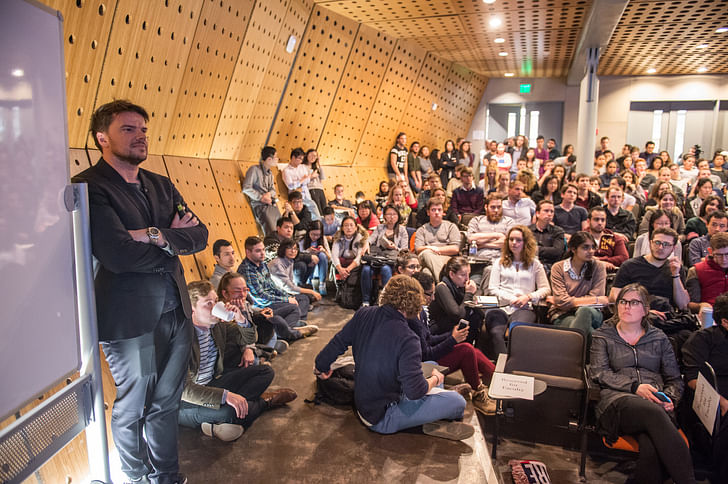
So, we will continue to teach the fundamental design skills and principals that the school has come to be known for, but we must also help students develop their own unique design intelligence, which is what will enable them to innovate and add value to the professional architecture offices where many of them aspire to work, as well as to the real estate development offices, the energy and resource management firms and the governmental and non-governmental bureaus for and with whom an increasing number of our students aspire to work. How do or will we do this? We recognize that we need to expose students to a greater variety of academic and professional design experiences including, and especially, exposure to other design cultures around the world. Syracuse Architecture has a long history in Europe, especially in Florence where we run among the best study abroad programs in the world. We will continue to have a presence there and in London for a long time to come. But we have not developed any academic or professional collaborations or exchanges in Asia where so many of our graduates will work, whether in offices based there or in North America or Europe. By collaborations I don’t mean renting out white box gallery spaces in exotic locations and broadcasting events back to home base. Instead, I mean developing real partnerships devoted to real projects. We need to update our fabrication facilities, both analogue and digital and better coordinate them with curriculum, which is also in need of augmentation and revision. Our intention is to build a very strong architecture foundation in the core and augment that with a variety of design approachesWe have two excellent program Chairs, Professor Jean-François Bedard, who heads the graduate program, and Professor Ted Brown, who is the new head of the undergraduate program. Professor Tim Stenson, who has done a remarkable job heading the undergraduate program for the last five years, will be returning to the faculty this year. All three have been working very hard with our faculty to update and augment our school curriculum. We also need to complement our outstanding faculty with new hires in design and research areas that extend our professional expertise and geographical reach. And, we need to develop new partnerships with industry and with other schools.
It is also crucial that we provide internship and other work opportunities for our students while they are in school and job opportunities after they graduate. We have what many regard as the best Career Services office of any school in the US. Led by Connie Caldwell, recognized in 2013 by Design Intelligence as among the 30 most admired leaders in design education, our Career Services Office does an excellent job of educating students about the job market and the kinds of opportunities available to them. This effort has historically been focused on creating interview and internship opportunities at US based firms, many of whom are led by our alumni. We are now expanding this effort to Asia where we are developing a network of internship and employment opportunities with architecture offices in Hong Kong, Shenzhen, Shanghai, Taipei and Seoul.
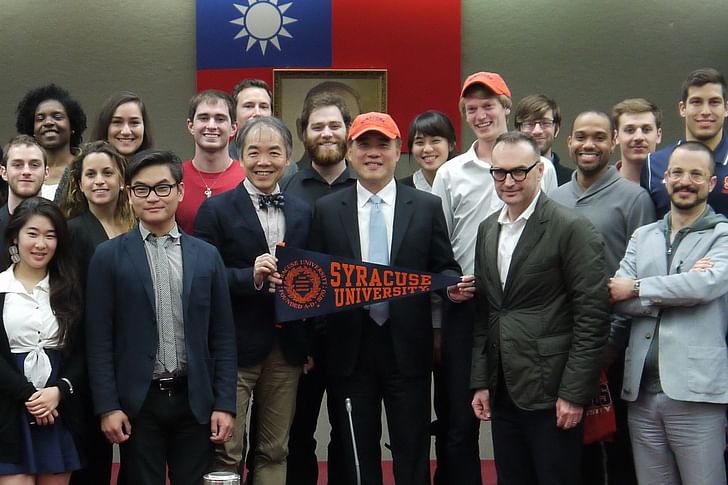
On balancing pedagogies:
When I arrived almost two years ago we made the decision to relocate our Visiting Critic Studios—intense, project-focused studios taught by practicing architects or professors visiting from other cities and other schools—from downtown Syracuse to a new, dedicated space in Slocum Hall. We worked with Common Name, the New York-based graphic design firm who is also redesigning our school visual identity, including the new website, to transform an existing exhibition space used for special events, into an extra large VC studio space that could play a more active role in the life of the school. The new VC studio space has been a great success and is not only more convenient for students who need to be in Slocum Hall where their other classes are held, but it also enables each of the Visiting Critics—between four and six each semester—and their students, to interact with and participate in other VC studios. Last year, for example, two of our VC studios worked together on a commissioned urban design project for the mayor’s office in Taipei: One studio was taught by Jimenez Lai from Bureau Spectacular in Chicago and the other was taught by Jenny Wu and Dwayne Oyler from the Oyler Wu Collaborative based in Los Angeles. Though the studios took very different approaches to the project brief, it was extremely helpful that the students and the visiting critics were able to interact and review each other’s work. One of the changes we are now implementing with our VC studios is to use them to expose students to a range of design approaches that they do not get in the core curriculum. These two VC studios are a good example: Lai, whose studio focused on narrative-based mash-ups created from cartoons and outsized urban furniture, asked our students to work in ways many thought was not “architectural,” while the Oyler Wu studio (like a studio taught this past fall by another Sci-Arc professor, Marcelo Spina, from the Los Angeles-based office, Patterns) was driven by technique and an interest in form making. It is not that we want to become a formalist, technique-based school, but that our students need to be exposed to that design approach. New York based David Ruy from Ruy-Klein, Nanako Umemoto from Reiser Umemoto, and It is not that we want to become a formalist, technique-based school, but that our students need to be exposed to that design approach.Michael Young from Young and Ayata, have all taught VC studios this past year that many students confided to me were not “Syracuse” studios, meaning they were more experimental than the Visiting Critic studios offered in the past. As an aside, one student who took David Ruy’s studio last year told me last week that in a recent job interview she was praised for the strength of her fundamental design skills but that told her they offered her the job based on the experimental work she did in Ruy’s studio. Needless to say, I was very pleased.

We have also been running a series of workshops featuring several Los Angeles-based designers and architects, including Anna Niemark and Andrew Atwood from One Office, Laurel Broughton from Welcomeprojects, and Jason Payne form Hirsuita, in an attempt to bring more design flavor into the school. But we are also running great design-build studios, such as the one this semester taught by Katherine Hogan and Vincent Petrarca from Raleigh, NC-based Tonic Design + Tonic Construction. Our intention is to build a very strong architecture foundation in the core and augment that with a variety of design approaches: variety in technique, scale, practice (we are offering two landscape studios this term, for example), geography and design culture. There is no other way for students to develop their own unique design intelligence.
Last year we also completed construction of the Einhorn Studio, an experimental studio space in Slocum Hall fitted out with a variety of digital fabrication and projection technologies. Designed by a group of our faculty led by Professor Brian Lonsway, we are now using the new studio as a prototype to test how these technologies can be used to engender a more collaborative studio and work environment. This summer, incorporating what we have learned from the Einhorn Studio, we plan a major update of our digital and analogue fabrication facilities in Slocum Hall.
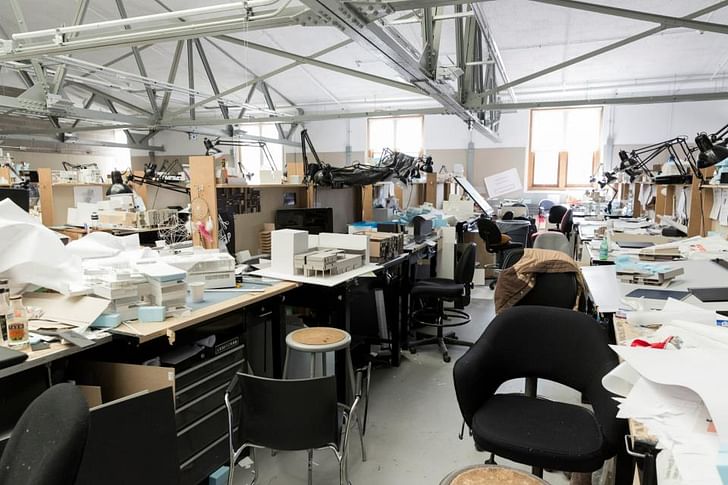

On engaging with cities outside of Syracuse:
Last January we opened a new purpose-built studio at the Syracuse University Fisher Center, located at 31st and Madison Avenue in New York City. Led by Professor Angie Co, the NYC program has studio space for 30 students, a lecture hall, seminar classrooms, a model-making workshop and plotter-printer facilities. It is certainly among best studio spaces in the city. The Fisher Center enables us to teach studios, host lectures, symposia and alumni and recruiting events for prospective students. Since it opened last January, we have hosted a number of events including a series of debates on the post-Sandy Rebuild by Design Competition organized by Henk Ovink, Special Advisor to former of HUD Secretary Donovan, and this past Fall, with Penn Design, a symposium on the architectural implications of the work of philosopher Graham Harman. This summer we will launch at the Fisher Center a new three-year summer studio project, “Gentrification Lab,” led by Rotterdam-based architecture firm ZUS. Based on work ZUS has done in Rotterdam at the Schieblock, a down-and-out commercial building that they squatted and redeveloped into an economically viable commercial complex, the studio will explore development strategies that provide an alternative to normative urban gentrification. In addition to the program in New York City, you may know that we have studio programs in Florence and in London, led, respectively by Professor Richard Rosa and Professor Francisco Sanin. Each semester we have between thirty and fifty students studying in each of these programs. Over the course of their studies, almost all of our students study at one of these three locations.
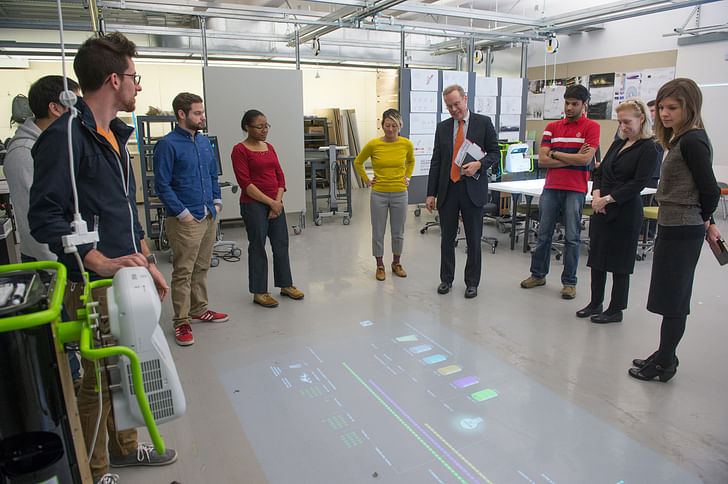
We also offer a number of travel studios including the Rubin Global Design Studio, sponsored by Syracuse Alumni and Board of Advisors member, Todd Rubin and the Rubin Family Foundation. Last year three studios traveled to Taipei to work for ten days on a project on which we collaborated with the architecture schools at National Chiao Tung University in Taiwan and Hong Kong University. The Rubin Global Studio paid for the students air fare and lodging. This year thirty students traveled for ten days to Rosario, Argentina, to work on an urban design project, all paid for by the Rubin Global Design Studio. Next year the Rubin Global Design Studio will likely focus on a project in Moscow. This semester we are also running a studio focused on “urban villages” at the Low Carbon City development in Pingdi, near Shenzhen, China. With financial support from the Shenzhen Institute of Building Research, one of our new partners in Asia, Syracuse Architecture Professor Wang Fei led a studio of 12 students there last month for a 10 day site research visit. Just this past week I signed a MOU with the Shenzhen IBR, with whom we will be developing a number of research and design projects over the next several years.
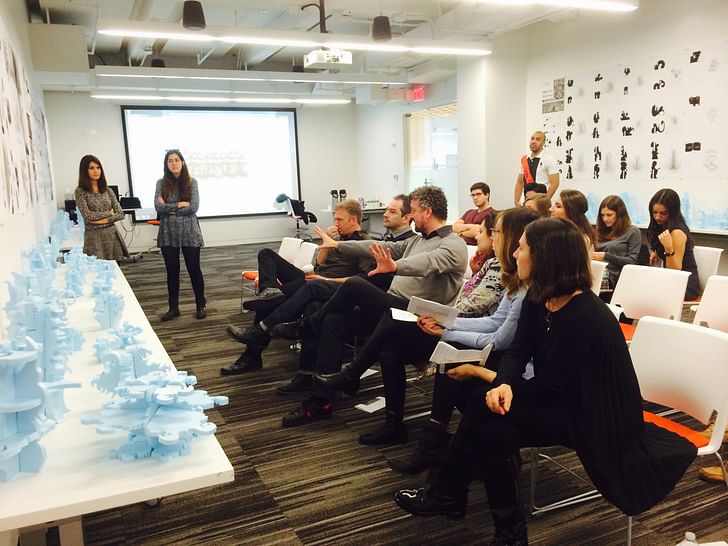
On the kind of student that comes to Syracuse:
We have two professional degree programs at Syracuse Architecture: B.Arch and an M.Arch. Students in both programs take core studios before they are eligible for VC studios or travel abroad studios. Both programs also do a capstone thesis project. Almost all of our students in the B.Arch program are interested in practicing professionally: some want to start their own firm, others aspire to work for a large office and others still are increasingly interested in alternative professional careers in real estate or public policy. Historically students in the B.Arch program came from the Northeast in the US, but over the last ten years or so they have increasing come from all over the US and even more recently from abroad. Our entering class this last year was 40% international, with students coming from more than 30 countries and almost all of the states here in the US. They are the largest entering class in school history, the most international, and the most academically accomplished.
Our M.Arch program, which this year returned to the top twenty in the Design Intelligence rankings, has two options that are determined by the student’s previous course of study. There is a two-year option for students who have completed a four-year, non-professional undergraduate degree program at an accredited school. These students are very much like our B.Arch students in that they are interested in pursuing a professional career in architecture. The three-year M.Arch option is for students who have no architecture training, but are interested in pursuing a professional degree. These students come from a variety of schools and courses of study and while many are interested in working in professional architecture offices, many are also interested in pursuing non-traditional architecture careers.
On degree specialties:
We want faculty to define who they are in the school not only by what they teach but also by what they do, by their design research.We will also launch a new M.S. in Architecture degree next year. Over the next several years we will develop three areas of concentration and students will apply to one of those areas of concentration. The first concentration is “Energy +” and will focus on the design of high-performance buildings and the development of low carbon city scenarios, but will deal with all aspects of energy consumption and the built environment. This 30-hour, three-semester post-professional degree will be research-and project-based and will operate in partnership with the Syracuse University Center of Excellence, which focuses on energy research and commercialization and the Shenzhen Institute of Building Research in Shenzhen, China, which also focuses on high performance buildings and environmental issues. The program will consist of a core of “energy” coursework including two studios + a capstone research and design project developed with core faculty in the program. Projects will be supported by industry partnerships and may be developed in one of four locations: Syracuse, New York City, or at the IBR in either Shenzhen or Shanghai, China. The program is research unit-based with an affiliated professor or two leading the project; eight to ten post-professional degree students working directly with the lead professors; and graduate and undergraduate students who may be working on the project for their thesis. In subsequent years we will develop other areas of specialization including programs in real estate development and health and wellness.
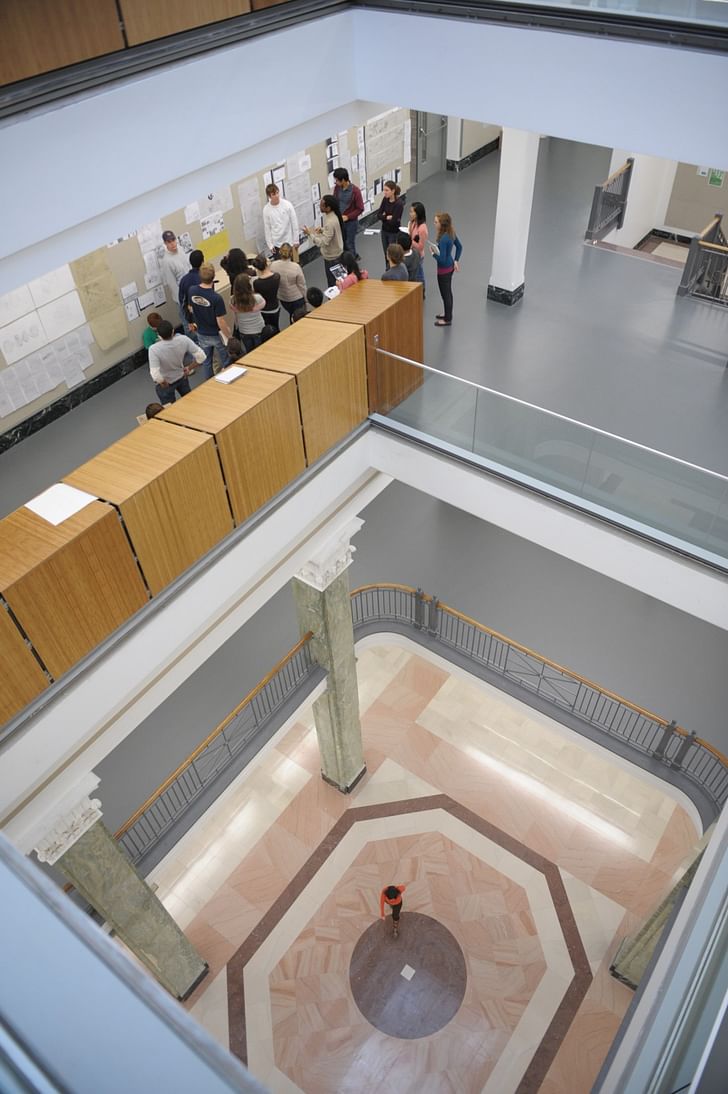
On faculty:
Ultimately our school is only as good or great as our faculty. As mentioned before, we have an outstanding faculty that has dedicated their lives to this school. We have excellent studio professors but we also have an exceptionally strong history theory faculty including, among others, Professors Mark Linder, Susan Henderson, Jean-François Bedard and recently hired Professor Lawrence Chua. We have been hiring many new faculty over the last two years including five tenure track and four full time last year and seven new tenure track this year, including faculty that will focus on the new M.S. Energy + Program. And we anticipate hiring more tenure track faculty next year. We are now beginning to shape the identity of the school around clusters of design research that makes up the DNA of faculty interest rather than curriculum. We want faculty to define who they are in the school not only by what they teach but also by what they do, by their design research. To that end, last year we tripled the amount of research dollars we award to faculty each year. We also have a new Endowed Faculty Fellowship, the Harry der Boghosian Fellowship, made possible by Paula der Boghosian to honor her brother Harry der Boghosian, a 1954 graduate of Syracuse Architecture. The gift is the largest in the school’s history by a living donor. The fellowship will enable us to bring to the school exceptional young architects who will spend a year teaching and developing a research project. This fellowship helps to mark the beginning of a new history at Syracuse Architecture defined more by the future potential of our faculty, staff and students and less by the legacy of a curriculum.
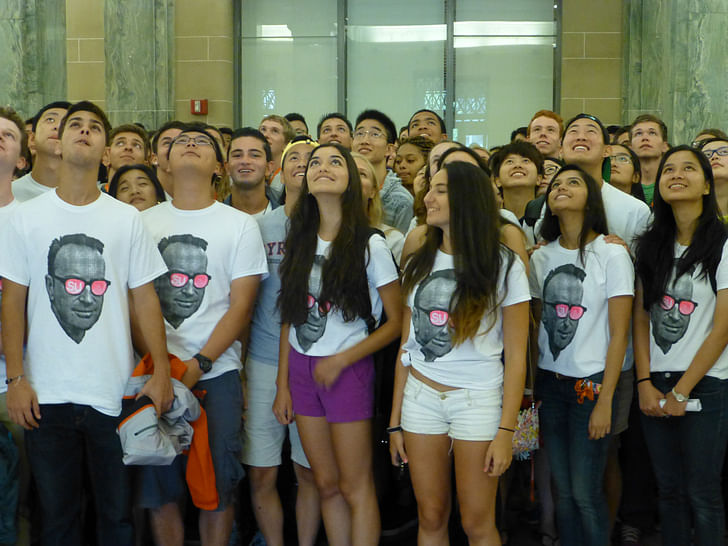
Former Managing Editor and Podcast Co-Producer for Archinect. I write, go to the movies, walk around and listen to the radio. My interests revolve around cognitive urban theory, psycholinguistics and food.Currently freelancing. Be in touch through longhyphen@gmail.com
5 Comments
This is such a great read about a really ambitious program, and capped off by the students in Speaks shirts....perfect. Serious work, stylish play, that seems to be the attitude!
Ugh. Compare this program, to the one at NJIT, and you'll understand my kvetching about the Dean, and the mission failure at the SOA.
Well, apparently, my comment wasn't clear enough, but if you listened to podcast, or look at my profile, you will know my feelings about the NJIT SOA program, and not the Syracuse Architecture program.
The SU Architecture program stands in stark contrast to what is happening, and has recently occurred at NJIT. Credible, steady leadership at Syracuse, instability in the leadership at NJIT. Syracuse, focused on the mission of educating architects, NJIT, mission by shotgun, with the hopes of some being productive architects? Artists? Interior designers? Graphic designers? What's next?
Now, go listen to the podcasts. You have my full throated endorsement.
Oh, I also forgot to add, when I attended NJIT SOA, Career Services, was pretty much non-existent, and as I recall, was part of the NJIT proper, and not specific to the Architecture program, perhaps that changed, but reading what SU provides, and the value graduates receive, I am certainly envious of the missed opportunity at NJIT.
Careers In Architecture
Career Development
I'll let you be the judge.
was a comment deleted? @ken who is this "apparently, my comment wasn't clear enough" directed towards...?
Block this user
Are you sure you want to block this user and hide all related comments throughout the site?
Archinect
This is your first comment on Archinect. Your comment will be visible once approved.